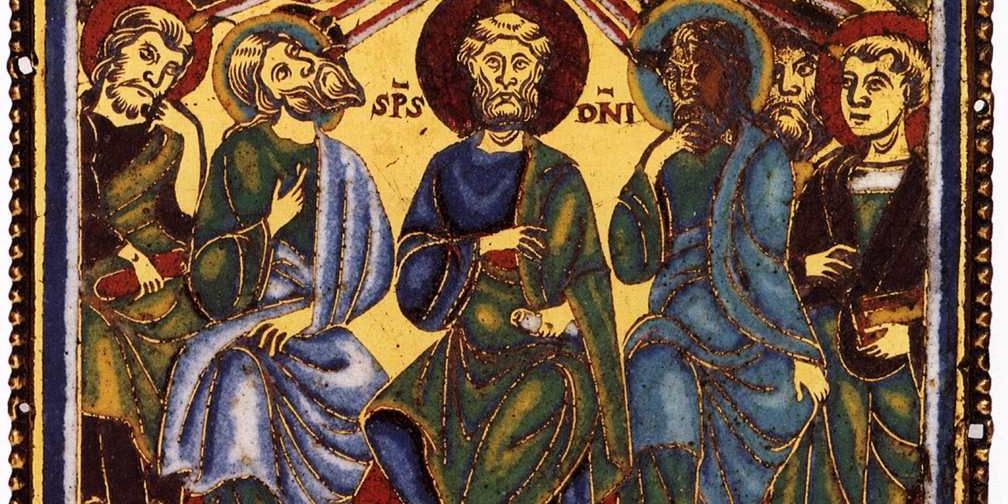
Acts and the Exaltation of Christ
In the first book, O Theophilus, I have dealt with all that Jesus began to do and teach, until the day when he was taken up, after he had given commands through the Holy Spirit to the apostles whom he had chosen.” Acts 1:1–2 (ESV, emphasis added)
Thus begins the book of Acts, which serves as a sequel to the Gospel of Luke. Given the prominence of Jesus in Luke, it may seem like a sharp contrast to have the apostles take center stage in Acts. Yet these opening words of Acts imply that Jesus continues to act and teach in Acts, and the Apostles are his chosen spokesmen.
We miss the emphasis of Acts if we move our attention from Christ to the Apostles. Instead, we must keep Christ in focus—even as we discuss the Holy Spirit—when we study Acts. In fact, Acts contains some of the most remarkable insights into the ongoing work of Christ anywhere in the New Testament.
In theological terms, Acts focuses in large measure on the work of Christ in his estate of exaltation. This estate comprises four aspects: 1) Christ’s resurrection, 2) ascension, 3) heavenly session at the right hand of God, and 4) his future return. These traditional aspects of Christ’s work of exaltation are distinct, but closely related, and all of these are mentioned in Acts. In what follows I’ll highlight a few of the ways these categories help us understand the person and work of Christ in Acts.
Christ’s Exaltation
First is the resurrection, which looms large in Acts. The Apostles consistently point to the resurrection as the proof that Jesus is the promised messiah, and indeed as proof that the Scriptures are true. For example, in Peter’s major Pentecost sermon in Acts 2 he rebukes the people for rejecting and crucifying Jesus, but God raised him from the dead. This fulfilled the hope of David in Psalm 16, where David expressed the confidence that the LORD would not abandon him to Hades. Yet this raises an interesting question: if David did indeed die, and his tomb was known in the first century, then how did the LORD fulfill this promise? Peter explains that David was speaking ultimately about the resurrection of the messiah (Acts 2:30–31).
Similarly, in Paul’s longest sermon in Acts, at Pisidian Antioch, the logic of his speech hinges on the resurrection of Jesus. After providing a David-focused survey of Israel’s history, Paul also points to the unjust treatment and death of Christ, but notes that God raised him from the dead (13:30). This fulfills Psalm 2:7: “You are my Son, today I have begotten you” (Acts 13:33).
Crucially, in Acts the resurrection of Jesus is the means by which Jesus reigns over an everlasting kingdom, and also explains his universal supremacy over all people. All people descend from Adam (17:26), and there is one man who has been raised from the dead who is judge of all people: Jesus Christ (17:30–31). The proper response is faith and repentance. In Acts the resurrection of Jesus is the means by which Jesus reigns over an everlasting kingdom. Click To Tweet
Much more could be said about the resurrection in Acts; suffice it to note that the resurrection receives the lion’s share of the attention when it comes to Jesus’s estate of exaltation in Acts. It is the crucial turning point in world history, ushering in the age of fulfillment.
Second Acts also mentions the ascension into heaven. The importance of the ascension is seen in the way it concludes the Gospel of Luke (Luke 24:50–53), and is then repeated at the beginning of Acts (Acts 1:9–11)—serving as what some have called a “narrative hinge” of Luke and Acts. Other times it’s unclear whether the resurrection, ascension, or heavenly session is in view, since Luke can summarize that God has “glorified” Christ (3:13).
Third, the heavenly session of Christ is apparent in the many apostolic statements about the enthronement of Christ. He reigns now at the right hand of the Father, fulfilling Psalm 110:1 (Acts 2:33–35; 5:31). Elsewhere Stephen sees Jesus standing at the right hand of God (7:55–56), which must in some way indicate Jesus’s support and vindication of Stephen’s unjust death.
Further demonstrating the heavenly session is the outpouring of the Holy Spirit. Peter states that the reason the powerful work of the Holy Spirit evident at Pentecost was a direct result of Jesus’s heavenly session and outpouring of the Spirit, received from the Father (2:33). In other words, the pneumatological reality of Pentecost is tethered to a christological reality: Christ is risen, ascended, and reigns in heaven.
Fourth, Acts also assures us that Jesus, the risen one, is coming again. This was promised by the angels at Jesus’s ascension (1:9–11), and Peter alludes to it with the suggestive phrase: “times of the restoration of all things” (3:21), which speaks to the return of Christ and the renewal of the world. And this renewal of the world is closely related to Christ’s own resurrection, which is the firstfruits of new creation (cf. 1 Cor. 15:20).
Lord and Christ
In summary, Acts speaks of the way that Jesus has been made both Lord and Christ (2:36) and its implications. This surely does not mean that Jesus was neither Lord nor Christ before his resurrection and ascension. For indeed, already at his birth he is both Lord and Christ (Luke 2:11). In what way, then, is Jesus “made” Lord and Christ in Acts? This is not an ontological “made,” but is a redemptive-historical “made.” That is, Jesus is now the resurrected and ascended Lord of glory, having completed his work of humiliation and been rewarded with the estate of exaltation. As such, he now occupies the heavenly throne at the right hand of the Father as the victor over sin and death, who continues to rule and guide his church by the power of the Holy Spirit.
The implications of this are far-reaching, and require much more space to tease out. But one point is rather straightforward: let us keep our eyes on Christ in Acts: our Pioneer (archēgos) and Savior (5:31), who is coming again.
***
I discuss these issues, along with key passages, at much greater length in The Hope of Israel: The Resurrection of Christ in the Acts of the Apostles (Grand Rapids: Baker Academic, 2020).

